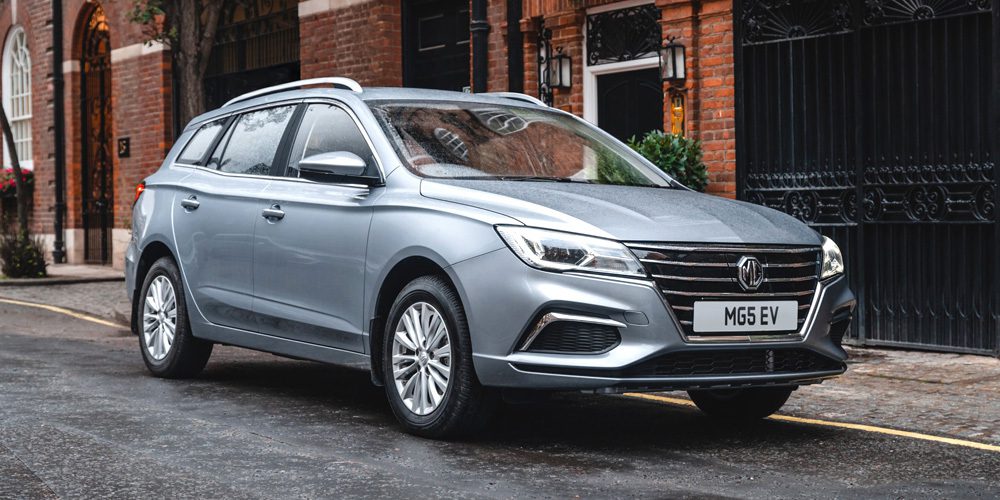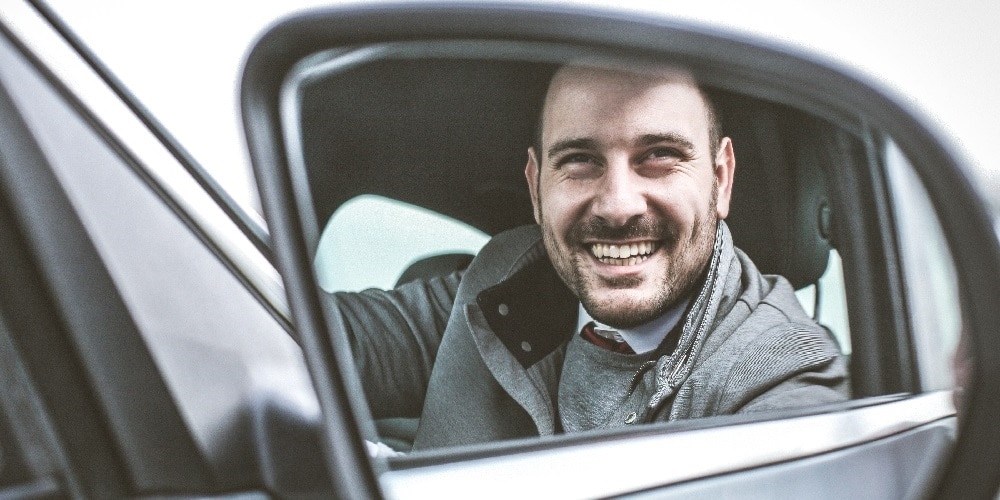If flexibility is the key aspect you’re looking into a job, you should start researching how to become an Uber driver. The best thing for Uber drivers is choosing when and how much they want to work. This has a direct impact on how much money an Uber driver makes.
People choose to become Uber drivers for different reasons:
- Driving Uber full-time as a professional driver
- Driving Uber as a second source of income (to supplement a part-time revenue, a pension, or other allowance)
- Driving Uber part-time (if studying, following a passion, etc.)
The answer to the question “How much do Uber drivers make in London?” is based on several variables — the time you dedicate to driving, the car you drive, and if you own it or pay for a subscription plan. Your income also depends on the Uber service you mostly drive for, varying if you’re driving UberX, Uber Green, Uber Lux or Uber Exec cars.
Another thing to consider is that since March 2021, all Uber drivers are considered workers, with perks such as sickness and holiday pay, which also adds up to how much Uber drivers make.
Important: Across the UK, Uber pays its drivers 12.07% of their earnings every two weeks, to reflect their right to paid holiday.
How much does an Uber driver make in London?
The Uber driver hourly wage in London is between £15 – £22 (after paying the Uber service fee), which is higher than the minimum wage. The National Living Wage was £10.42 per hour in April 2023 – this amounts to £469 in a 45-hour workweek, so it’s fair to say that a full-time Uber driver could earn more than that (before expenses).
Below is an estimation of the earnings for an Uber driver in 2023 who subscribes to a brand new car from Splend. The results are based on a survey conducted on Uber drivers in London.
From this survey’s respondents, only 66.7% are doing exclusively ridesharing — 28.3% are also private employees, 8.3% are students and 6.7% also engage in delivery services.
Most of the drivers who participate in this survey prefer driving only for Uber (41.6%) or for both Uber and Bolt (36.6%).
How to calculate your earnings as an Uber driver?
There are a few things you should consider when you estimate your earnings as an Uber driver. Uber’s pay structure, Uber service fee and commissions, car running expenses, taxes, London traffic charges.
Uber pay structure
Uber’s pay structure is dynamic and flexible and can vary from a day to another.
An Uber ride’s final price consists of:
- Base fare – the minimum rate for a ride, based only on distance and estimated time. This can differ for each Uber ride type
- Booking fee – a standard fee that covers Uber’s operational and administrative costs
- Surge charge – for high demand in unusual traffic conditions (bad weather, busy area, special events) the cost per ride will increase
- Tolls – highway tolls and airport fees are also passenger’s responsibility to pay (Luton, Gatwick, Stansted and Heathrow drop-off charges)
- Cancellation fee – if the ride is cancelled while you’re on your way for pick-up, you receive a cancellation fee
- Waiting fee – passengers have to pay an extra fee per minute if they’re not ready for pick-up at your arrival time
- Customer tips – for a pleasant ride experience, passengers can offer you tips after you finish the ride
What are the expenses of an Uber driver?
Even as an Uber employee, you’re still running a small business as an on-demand driver. You’re responsible for all costs related to the car, maintenance, insurance and any other taxes. However, there are some ways to reduce these costs and increase your profits. Considering the rise of EV vehicles, you can rent a car for Uber by taking advantage of the Uber Clean Air EV Assistance plan.
Uber service fee
Uber takes 25% of your earnings, which is important when it comes to managing your expectations. If you want to how that compares to other rideshare apps, check out a side by side comparison for the most popular rideshare apps in London, to get a better idea of the commission rates, pricing, and fares.
Fuel
The most obvious and frequent expense is your fuel cost. This depends on the car you drive, where and when you drive most of the time, as well as your driving style.
The most important factor is your car’s drivetrain – traditional cars with a single internal combustion engine cost about £13 to £16 per 100 miles to run, according to lovemoney.com. Petrol-hybrids, on the other hand, consume about 20% to 35% less fuel than even the most efficient petrol or diesel cars. Electric models can run 100 miles at a cost of only £2 – £10 depending on where you charge them, according to the Energy Savings Trust.
Maintenance
If you’re wondering how much you should save for maintenance, we estimated a £12-£15 per week (more for older cars), with an average of 32,000 miles driven per year. This rounds up to around £750 for yearly maintenance.
Did you know? If you get your PCO car from Splend, most of your routine maintenance is covered.
Insurance
A PHV insurance policy is expensive – it costs anywhere between £2,500 and a whopping £4,000 per year, depending on the age of the car, distance driven per year, as well as your driving history. For an average £3,000 policy, this means £55-£60 per week that you need to pay on insurance only.
Taxes
Even though currently rideshare drivers in the UK are considered Uber workers (an Uber Eats delivery driver is still considered self-employed), HMRC can’t deduct your Income Tax and National Insurance directly from your salary, and you need to file a Self Assessment every year. You can read more about this in our Self Assessment Guide.
The deductions from your total earnings will make the difference between gross vs net income. There are two main taxes to consider as an Uber driver — Income Tax and National Insurance.
Did you know? If you earn up to £12.570 in a tax year, you don’t have to pay the Income Tax.
If your earnings overcome this amount, you will have to pay 20% tax on your profits.
However, you still have to pay the National Insurance tax if you earn over £1,000 in a tax year, which enables you to claim some state-provided benefits. There are two types of National Insurance:
- Class 2 (for profits over £6.725/tax year) – you pay ~£164 in a year
- Class 4 (for profits over £11.909/tax year) – you pay 10.25% of your profits.
ULEZ and Congestion Charge
There are two charges that directly affect how much Uber drivers make in London: the ULEZ Charge and the Congestion Charge.
If you drive an older petrol car the ULEZ charge is a daily £12.50 expense, valid every day of the year, except on Christmas day. If you have a hybrid car with a petrol engine – it must comply with Euro 4 regulations, and diesel hybrids must comply with Euro 5 standards.
Did you know? Fully electric cars are exempt from the ULEZ charge.
The Congestion Charge, however, is much stricter. It’s a £15 daily charge enforced between 7:00 am and 6:00 pm, and you only enjoy an exemption if you drive an electric car.
How to earn more as an Uber driver?
With Uber, you always have the most valuable tools at hand to think outside the box and boost your earnings – your car, your smartphone, and your skills.
Switch to EVs and earn more with Uber Green
Uber Green is an Uber service that offers rides in fully-electric cars for the same price as an UberX ride. This service is available anywhere in Greater London.
Uber Green is a great opportunity for PCO drivers to increase their earnings, since you earn 10% more for every completed Uber Green trip. All this whilst contributing to a cleaner air in your city and benefiting from the perks of driving an EV in London.
Drive for multiple rideshare apps
Although the most popular, Uber is not the only rideshare platform you can try. Once you already have everything you need to get started with Uber, which is the most demanding, signing up to the other rideshare platforms is as simple as creating an account and uploading your documents.
Being on multiple rideshare apps means that you can maximise your efficiency: if there aren’t enough new ride requests at your drop-off point, or there’s too much competition from other drivers, you can always check out another platform so you don’t have to drive on an empty car.
Use your car for parcel and food delivery
During the COVID-19 lockdowns, ridesharing took a hit, as travel and commute diminished, but the drivers were much-needed elsewhere. With people being forced to stay at home, they started relying more on parcel deliveries, food orders and grocery shopping delivery.
This has opened up a world of new opportunities besides ridesharing — parcel delivery apps like Amazon Flex and food delivery with Uber Eats, for example. These are great alternatives if the demand drops on Uber for a longer time or simply if you feel like doing something else.
Learn how to become an Uber Eats driver in London
Track and reduce your expenses
The best part about ridesharing is that you get to manage your expenses by yourself. Keep track of everything you’re spending on, from fuel and insurance to car maintenance and traffic charges. This way, you can reduce unnecessary expenses or find cheaper alternatives, if possible.
If you’re on a car subscription plan, it’s much easier to track how much you spend with the detailed bill you get every week. Moreover, important expenses, such as insurance and maintenance are already included in your subscription plan.
Tell a friend about your job
If you enjoy being a PCO driver, you’ll certainly want to tell your friends and family about on-demand driving.
At Splend, we reward you with £200 for every friend you refer to us, and they also get a £29 discount upon signing up. The more people you share your story with, the more you boost your income, as we don’t have a cap on these referral bonuses. How much you earn this way is only up to you and your networking skills.
Learn more about the Splend referral program.
Put in some extra effort
Pay attention to small details — be polite, communicate with your passenger, help them with the luggage, keep your car clean and fresh, provide phone chargers, offer snacks or water. This is the key to get more tips and 5-stars ratings. Although it seems like some extra pounds won’t make much difference, it’s worth the effort when you add it all up at the end of the month. It
Keep improving your driving strategy
We provide every customer with a dedicated Customer Specialist, a professional ridesharing coach whose job is to ensure you’re the most profitable Uber driver you can be.
They not only guide you through the process of becoming an Uber driver. But also take care of your car, and check your performance regularly to help you optimise your strategy.
About Splend
Splend is more than a set of wheels. We’ll help steer your career.
In addition to providing you with the most important tool in your career as a rideshare driver. Splend also offer ongoing training, support, and data-driven feedback via your personal Customer Specialist. You also enjoy a growing array of customer benefits including discounts from our partners.
For more information about Splend, make an appointment at our London Hub at 393 Edgware Road Cricklewood, London, email us, or say hello on 0333 016 4331


![How to Become a Uber Driver [Complete Guide] | Splend](https://www.splend.co.uk/wp-content/uploads/2020/02/how-to-become-an-uber-driver-in-london-2.jpg)

